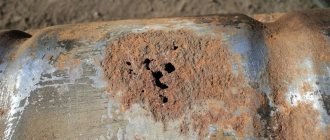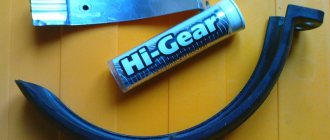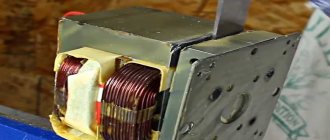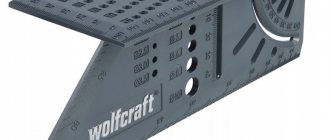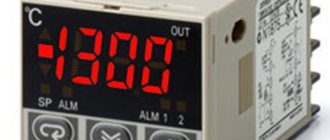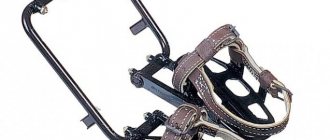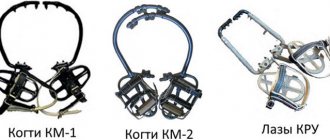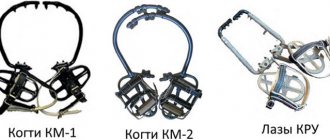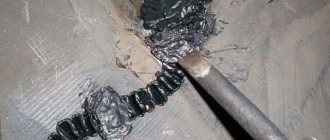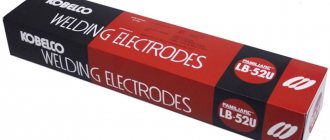What is cold welding? This question is asked by many of those who are planning to use this tool for quickly joining metals. Without a doubt, many people have heard about cold welding, and a sufficient number of people have already recognized all the advantages of this technology. But, unfortunately, not all of those home craftsmen who have already tried to connect metal parts using such a means were able to appreciate all of its unique characteristics.
Cold welding for metal
The main reason for this situation is that very often our people do not consider it necessary to carefully read the instructions, which stipulate all the nuances of using a particular device or technology. That is why we want to devote this article to all issues related to the rules of use and scope of such a wonderful tool, which, undoubtedly, is cold welding.
Description and distinctive features
Liquid welding for plastic is a polymer adhesive composition that creates a strong connection between parts made of different or identical materials. The main feature is the absence of high temperature exposure.
The chemical properties of cold welding contribute to the bonding of plastics. The product penetrates the pores of the material, hardens, forming a uniform joint.
The adhesive contains the following components:
- epoxy resins;
- metal fillers;
- amine resins;
- mineral supplements.
The product is used not only when working with plastic. It connects parts made of wood, metal, and various alloys. Universal products are used for any material; highly specialized products are used in accordance with their intended purpose.
Application area
The heat resistance of the adhesive determines the scope of application:
- Household. Repair of heating radiators, gas boilers, water heaters, stoves, pots, kettles.
- Automotive . Repair of all vehicle components that are exposed to high temperatures: cooling systems, exhaust gases and engine.
Important! A modern engine is a high-tech unit. Without professional skills, you should not carry out repairs. Before using cold welding to repair an engine, we recommend consulting with specialists
Where is the method used?
Almost all plastic items can be joined or repaired using the cold method.
You can use the product to repair household appliances and eliminate defects in the following products:
- polymer elements of the car (bumpers, racks);
- fishing tackle, tourist equipment;
- handles and other plastic furniture elements;
- pipelines made of simple or heat-resistant plastic;
- dishes, garden tools, household supplies.
Cold welding is often used in car repairs.
Expert advice
There are a number of useful recommendations that will help you complete the job with greater accuracy and efficiency:
- when repairing pipes and pipeline elements, you need to buy only a moisture-resistant composition, taking into account constant contact with liquid;
- cold welding does not stick well and adheres less well to a wet surface, so the base must be thoroughly dried before starting work;
- if you have to urgently repair a leak in a plastic pipe, the patch needs to be changed later - adhesion will not be sufficient;
- To harden the mass faster, you can use a hairdryer with warm air;
- when the instructions do not indicate that the welding can withstand regular vibration, it is worth additionally attaching a pad to the junction of moving elements;
- You should only buy products from trusted manufacturers who have been on the market for a long time;
- There is no need to use material that has expired; its quality has been reduced.
Types of cold welding
The products are liquid or plasticine-like. Based on their composition, they are divided into one- and two-component ones.
Dry method
The adhesive is supplied in the form of a rod, the outer part of which consists of a hardener, the core is made of epoxy resin. A piece of sufficient volume is separated from the tube to cover the surfaces being repaired. After this, the dry material is rubbed with your fingers until a thick, soft mass is formed. Uniformity is controlled by paying attention to the color of the product.
Rod cold welding in the form of a pencil.
Liquid products
Such cold welding means for plastic are divided into 2 types:
- Two-component compositions. Filler and resin are supplied in separate bottles. The ingredients are mixed in equal quantities until a homogeneous liquid mass is formed.
- Single-component products. They are completely ready for use and resemble regular office glue. The product belongs to the universal category. It is most often used in domestic conditions. The one-component composition is capable of connecting any types of plastic.
We recommend reading Types of wire for semi-automatic machines
One-component cold welding.
Technical characteristics of various manufacturers
Let's look at the list of products that are popular in the largest cities of Russia - Moscow and St. Petersburg:
- ABRO Thermometal TM-185 . Country of origin: USA. One-component material for sealing cracks and holes in steel and iron parts. Suitable for use in the repair of automotive components, household heating appliances, and industrial equipment. Contains anti-corrosion additives. It is resistant to petroleum products. Withstands temperatures up to 1316 Cº. Full polymerization time is 24 hours. The recommended layer thickness is 6 mm.
- Adhesive “cold welding” DIAMOND “HEAT RESISTANT” . Product made in Russia. Used to connect various surfaces: ferrous metal, stainless steel, plastic, glass, ceramics, wood. Most effective for repairing batteries, heating radiators and various pipelines. Can be used on wet or oily surfaces. Heat resistance up to 300 Cº. Complete polymerization time – 24 hours. Tear strength – 120 kg/cm².
The above products, among others, can be purchased in the Leroy Merlin network of construction hypermarkets.
Safety at work
According to the instructions for use, when using liquid welding, the following rules are observed:
- Avoid contact of the product with the skin. It is recommended to work in a special suit and gloves. In case of accidental contact with glue, the skin is thoroughly washed with water and, if necessary, consult a doctor.
- The connection of plastic parts is carried out in a well-ventilated area. To protect the respiratory system, wear a respirator.
- Do not use glue for repairing products in contact with food and drinking water.
- When working, do not leave the product in places exposed to direct sunlight.
- The dried mass is heated near the battery for 30 minutes.
The finished weld does not emit toxic fumes, so the repaired product can be used for household purposes.
Component Shape
Cold welding differs in the degree of thickness: paste-like and liquid compositions are produced.
- Paste-like is a one-component substance, ready for use. In appearance it resembles children's plasticine.
- Liquid welding for metal is produced in special containers. It is a two-component adhesive that must be mixed before use.
Two-component solutions have the advantage of a long shelf life , while one-component glue must be used after opening the package.
Choice of composition and best brands
When purchasing a material, pay attention to the performance characteristics. The welded joint must withstand heat and mechanical stress. For large volumes of work, choose durable and quickly setting types of glue.
Cold welding for plastic is subject to less stringent requirements than means for repairing metal products.
The compositions of the following brands are considered the best:
- Poxipol. A universal two-component adhesive is used to join parts made of different materials. The product is supplied in 2 tubes placed in a cardboard box. It can be used to repair structures located on the street. Work at negative temperatures is allowed. In this case, the hardening time increases. Cold welding does not spread or wrinkle. It does not contain solvents, so it does not pose a danger to humans.
- Tytan. The welding agent consists of epoxy resin reinforced with plasticizers and hardeners. Hardening time does not exceed 30 minutes. You can start using the part in an hour. Operating temperature range – -60…+130 °C. Titanium welding is used in the repair of technical equipment, mechanisms and structures used at high temperatures.
- Mastix waterproof glue. The multicomponent product contains epoxy polymers, fillers, plasticizers, and hardeners. When spreading the glue in a thin layer, the setting time is 7 minutes. Operating temperature range – -60…+200 °C. Welding firmly connects not only plastic but also metal parts.
Cold welding grades.
Choice for plastic
The main parameters that you need to pay attention to when choosing are:
- connection strength;
- working temperature;
- setting and polymerization time.
Thus, if you are choosing an adhesive for plumbing work: you are going to repair a hot water connector or are deciding how to seal a leak in a heating pipe, you should choose a high-temperature adhesive, but for repairing drinking water systems, almost any universal product will do.
If the future connection will be subject to external deformations, pay special attention to the strength of the connection . As practice shows, 400-450 kg/cm² is an indicator that can withstand most loads.
When choosing an emergency repair product, choose a fast-drying adhesive. The average drying parameter varies between 5-8 minutes.
Advantages and disadvantages
The main positive quality of the cold method is the ability to use it to work with any plastic products. There is no need to use welding machines or auxiliary devices for gluing.
The parts do not require complex preliminary preparation.
Other benefits of adhesives include:
- Possibility of joining elements of complex structures. The adhesive can be used in fire and explosive conditions.
- Increased tightness of seams. There are no leaks observed when welding pipes.
- Minimum amount of plastic waste.
- Affordable price, wide range of products.
- Minimum gluing time.
- Possibility of use for welding parts subject to vibration loads, rupture, and shear. This is due to the increased elasticity of the glue.
- Water resistance. Almost all compositions have this quality.
- Possibility of use at extreme temperatures. Specialized products can withstand heating up to +1000 °C.
We recommend reading: Do-it-yourself cold and hot welding of linoleum
The disadvantage is the possibility of deformation of the connection under high pressure.
Types and manufacturers
Typically, cold welding is used when it is not financially feasible to use the hot method or it is difficult. Such situations occur when a minimal defect appears, damage to a dimensional product, or the risk of serious internal stresses in the pipe.
The following types of products can be used for repairs:
- universal – used for gluing metal, plastic, stone, wood, glass, concrete and most other materials;
- automotive - if the material indicates that it can withstand high temperatures, then it is allowed to be used in pipe repair;
- for plastic - usually the heat resistance of such products reaches +260 degrees and above, so they are also suitable for work.
Products marked “for wood” or “for plumbing” are not suitable. They, as a rule, are not heat-resistant, and the quality of adhesion will be lower. It is better to find a specific welding method for working on metal or plastic with a clear indication of the temperature conditions. There are even super waterproof products for working underwater, which can also be used for cold welding.
Domestic formulations are cheaper than imported ones, but are not inferior in quality to the latter. Just don’t take the cheapest welding, it will certainly produce a low quality weld. The most popular means are:
- Hi-Gear. A universal adhesive, it is often purchased by car owners to seal elements subject to heavy loads. This glue will help eliminate any leaks in the heating system.
- "Titanium". Suitable for any materials, does not deteriorate from exposure to water and high temperatures.
ABRO, Polymet, Alma, Wurth Liquid, Permatex Cold Weld weldings are also in demand.
Instructions for use
The method of application depends on the type of adhesive.
Liquid glue
To weld plastic items using this method, follow these steps:
- Prepare the surfaces. They are cleaned of dust and contaminants and degreased. Without removing fat, it will not be possible to properly glue the parts together. If necessary, clean the plastic with sandpaper.
- Mix the resin and hardener. The volume of the finished composition must correspond to the area of the defect or future weld.
- Apply the product to the parts being processed. Connect the elements with a tourniquet, rubber band or clamp.
- Press the surfaces firmly against each other. Wait the time specified in the instructions. They begin the final processing of the structure - drilling, threading, painting.
The two components are mixed together immediately before use.
Dry cold welding
In this case, perform the following actions:
- clean and degrease surfaces using standard methods;
- mix the solid components of the product (you need to work in thick rubber gloves moistened with water);
- wait until the color of the mass changes to brown;
- distribute the composition over the welded joint;
- wait until the adhesive hardens.
How to use welding
When performing work, you must follow the instructions for cold welding for plastic. It provides the proportions for mixing the base with hardeners. The quality of adhesion depends on proper mixing.
The mixture should be applied to a thoroughly cleaned surface. Step by step use:
- Mixing resin with components. The amount of kneaded mass should cover the glued area.
- Carry out a thorough warm-up of the mass.
Kneading is carried out using moistened, thick rubber gloves.
- When the mass has acquired a brown tint, it is applied to the area to be glued.
- The elements are connected and fixed.
- After 4 minutes setting will occur, after 15 minutes it will be firmly attached.
Separately about specific cases
In some situations, when using liquid welding, additional steps are required.
PVC pipes
Damage to plastic elements of a water supply or heating system is not uncommon. To quickly eliminate a leak, use the cold welding method.
Repairs are performed as follows:
- Prepare the surface for processing. Remove particles of moisture, dust and dirt.
- The amount of edge deviation is calculated. For a pipe with a diameter of 4 cm, this parameter should not exceed 2 mm.
- Cover the defect with a dry compound. Apply a fixing tourniquet to the connection. If all actions are performed correctly, the leak will disappear.
This measure is temporary; it only postpones the procedure for replacing the damaged element with a new pipe.
Preparing the surface for welding.
Floor linoleum
To glue sheets of this material, perform the following steps:
- Lay the elements overlapping on the floor. Using a metal ruler and a construction knife, cut through both sheets. If the overlap width is 10 cm, the cut line should be 5 cm away from the edge.
- Remove scraps of canvas. There should be an even joint.
- The canvases are folded back. If the material is not secured, the joint is glued with double-sided tape. It is recommended to work with a partner during these stages. First, the tape is glued to the floor and removed from the protective film. Linoleum is laid on top. Roll the joint with a roller.
- Wipe and dry the areas of linoleum adjacent to the joint. Tape the joint with masking tape. It is also rolled in with a roller. If the preparatory steps are carried out correctly, liquid welding does not fall on the surface of the floor covering.
- Cut the masking tape along the connection line. This will allow you to carefully apply liquid welding to the joint.
- Shake the bottle with the welding agent and clean the tip of any dirt.
- Distribute the glue. To do this, the tip is inserted into the gap between the blades and pressed with a finger. The other hand squeezes the tube. Slowly guide the tube along the joint. The composition should not come into contact with unprotected areas of the floor covering. If this happens, wait until the product dries and then clean it off with a knife.
- After 15-20 minutes, remove the masking tape. It is recommended to do this at an acute angle. After completing all the steps, a thin invisible seam is formed.
We recommend reading: How to use Poxipol glue
When using thick compositions of type C, you can avoid applying masking tape.
Repairing cast iron and other types of radiators
Working with radiators is similar to sealing defects on pipes. The surface is cleaned and degreased. You can use alcohol for this purpose, applying it with a cotton swab. Next, take a ball of resin approximately 2 cm in diameter, knead it, mixing the components. Press the resin to the damaged area, smooth it out, and hold it with a rag or clamp.
Usually 30-40 minutes are enough for polymerization, but it is better to use the battery after a day, not earlier. Naturally, the water supply must be turned off before repairs. If you need to remove a fistula, you need to take fiberglass and a liquid solution, wrap the area and seal it securely.
Cold welding is an excellent temporary measure until the end of the heating season. It will help eliminate pipe or radiator leaks quickly and without hassle!
Recommendations from professionals
When working with cold welding, consider the following tips:
- Heating the parts being glued increases the strength of the resulting seam. The hardening time at elevated temperatures decreases, so be careful and careful when working. A hair dryer cannot be used for heating.
- If the elements being welded are subject to vibration loads, the cold welding method will be ineffective. The adhesive composition is not designed for use in such conditions. In this case, a universal remedy is replaced with a highly specialized one.
- The welded joint does not always have high aesthetic qualities. When assembling decorative structures, other welding methods are used.
The adhesive can be applied to damp surfaces. Special formulations are designed for this.
